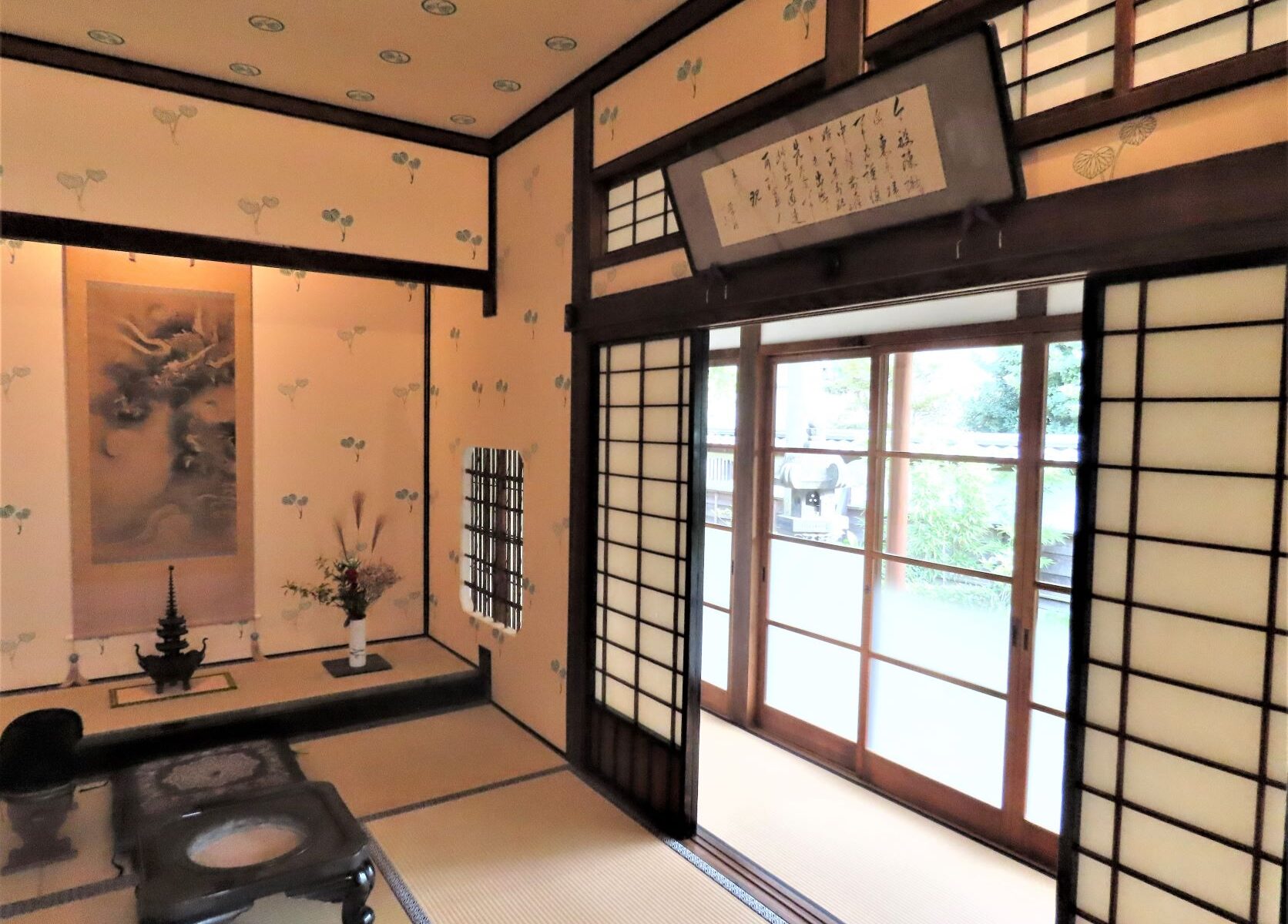Toeizan Kan’eiji Temple

Kan’eiji Temple was founded by Tenkai Daisojo, who was devoted to three generations of Tokugawa shoguns: Ieyasu, Hidetada, and Iemitsu.
On October 15, 2022, the Konponchudo Hall of Kaneiji Temple, the Aoi no Ma, where Yoshinobu Tokugawa was confined, and the mausoleums of successive Tokugawa shoguns were opened to the public on October 15, 2022.
This time, I received special shooting permission and will report on the situation.

Kan’ei-ji Temple is adjacent to the north side of Ueno Park and protects the cemetery, including the grave of the Tokugawa family.
It was founded in 1625 by Jigen Daishi Tenkai as a prayer temple to pray for peace and security for the shogunate and all people.
Later, the mausoleum of the fourth shogun Tokugawa Ietsuna was built, and it is a famous temple that also serves as the shogun’s family temple.
The Konpon Chudo, which will be open to the public this time, was originally built near the current Ueno Park Great Fountain, but was destroyed by fire during the Ueno War.
In the Meiji era, the current Konpon Chudo Hall is said to have been relocated from Kawagoe’s Kitain Temple Honjido Hall.
If you walk a little away from the area where art galleries, museums, music halls, etc. are lined up, and walk to Kan’eiji, the atmosphere will change, and a dignified temple and shrine will welcome you.
The Buddha of Konponchudo, which embodies the idea that all things are equal

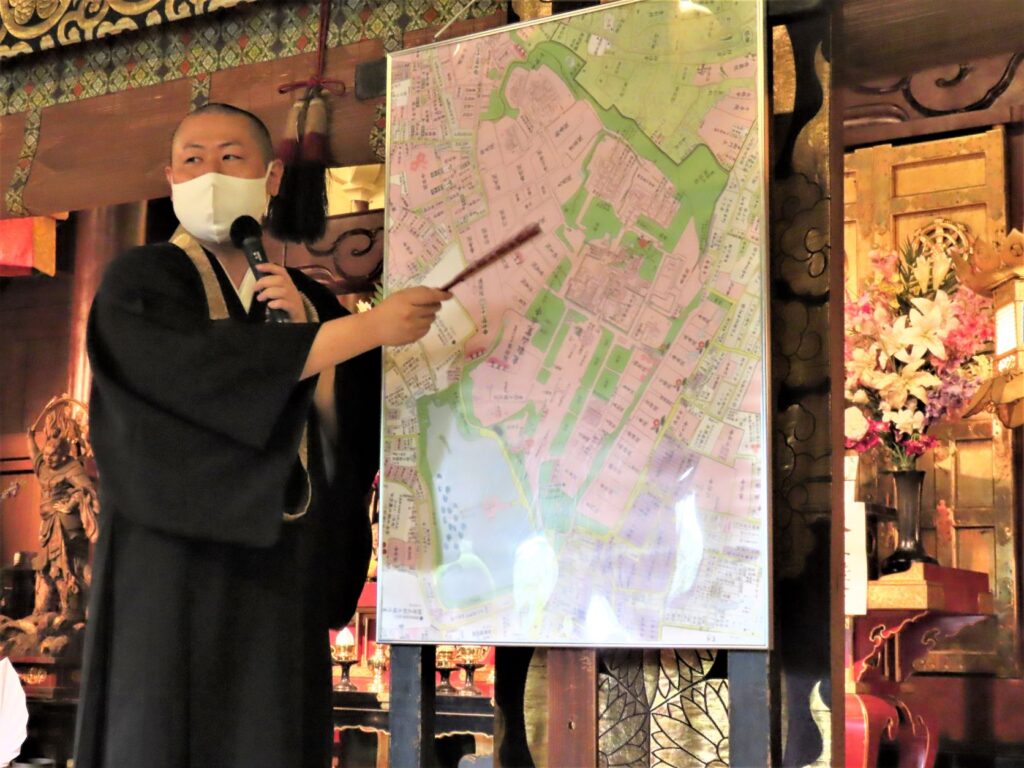
When I was guided to the Konponchudo, many participants had already gathered.
On this day, Mr. Ryogaku Ishikawa, a butler at Kan’eiji Temple, gave us an explanation.
The official name of Kan’eiji is ‘Toeizan Kaneiji’. “Toei” means “Mt. Ninna-ji Temple and Kennin-ji Temple in Kyoto, Kencho-ji Temple in Kamakura, and so on, are very few ‘Gengo-ji Temples’ that have received imperial permission, and this also suggests that Kan’ei-ji Temple was one of the most famous temples in Edo.
Kan’ei-ji Temple was built by order of the shogunate, but Ishikawa says that the founder, the high priest Tenkai , did not want it to be a place just for reading sutras for the sake of the shogunate .
Therefore, Tenkai built Kiyomizu Kannondo, which imitated the stage of Kiyomizu Temple, and Shinobazu Pond Bentendo, which likened Shinobazu Pond and a small island floating there to Chikubu Island, which is known for Lake Biwa and Benzaiten Hall. In addition, seasonal flowers such as cherry blossoms from Mt.
In this way, Kan’eiji gradually changed its appearance into a “open temple” for the common people.

What is particularly eye-catching in Konponchudo is the wooden Buddhist statues that are extremely elaborate and exude a solemn atmosphere.
According to Mr. Ishikawa, the Buddhist statues in the main hall are modeled after Enryakuji Temple on Mt. This is very interesting because it embodies the philosophy of Mahayana Buddhism that “all living beings have the Buddha nature, that is, the possibility of becoming a Buddha.” .
It seems that Tenkai Daiso had a strong belief that “there is no discrimination between people in the presence of Buddha.”
Special release of “Aoi no Ma” where Prince Yoshinobu was confined!
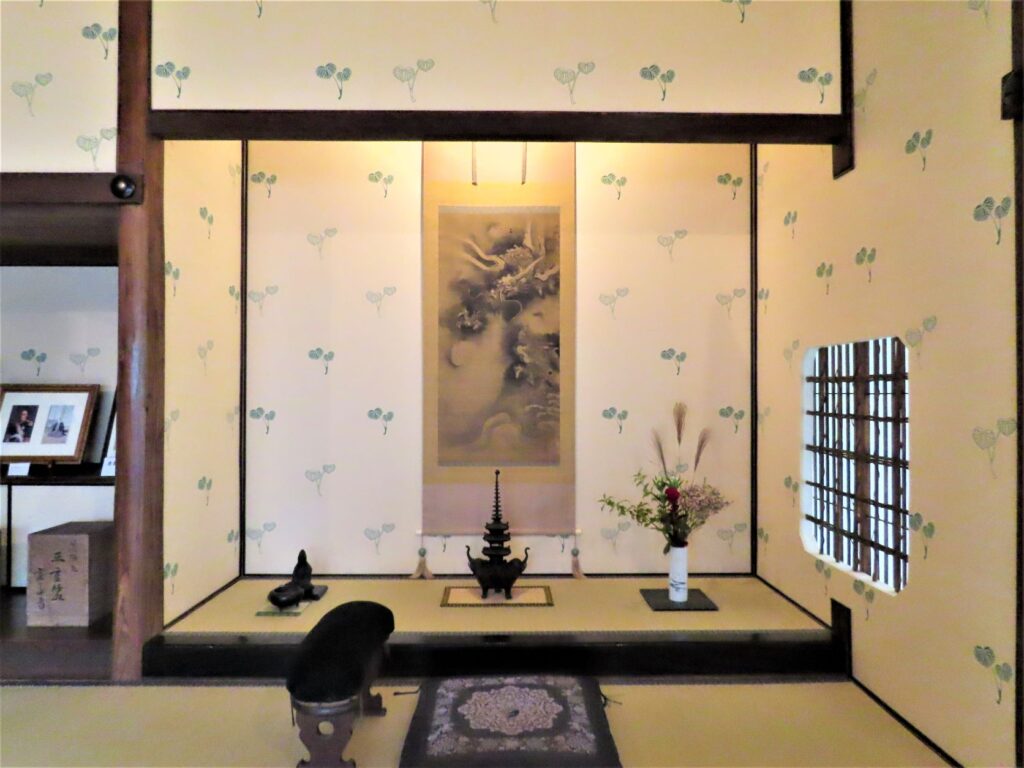

After walking through the corridor inside the Konponchudo, we were guided to the Aoi-no-ma, which was specially opened to the public this time. This is the room where Yoshinobu, the fifteenth shogun who was defeated in the Battle of Toba-Fushimi, spent his confinement life.
Yoshinobu was a “talented man” who excelled in various fields such as Western-style painting, Japanese-style painting, and calligraphy. As a witness, he tells the impressions of his life.
In addition to the items that Yoshinobu used to keep in the room, the wallpaper with the elegantly designed Futaba Aoi (Futaba Aoi) is eye-catching, but this was not the case at the time, and it goes well with the ukiyo-e prints depicting Prince Yoshinobu. It is interesting that it was added later.
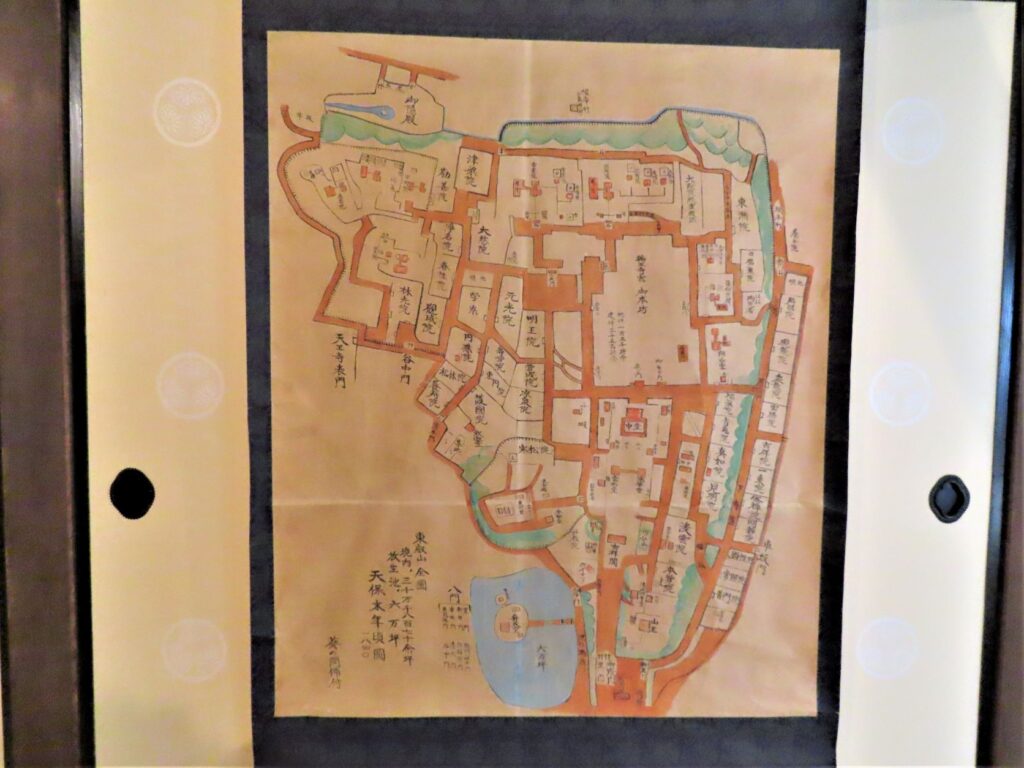
In the past, the precincts of the Kan’ei-ji Temple covered an area of 305,000 tsubo (305,000 tsubo) centered on the land of Ueno Park. Kan’ei-ji Temple lost most of its precincts in the Meiji era. Eventually it will become Ueno Park.
In addition, since it suffered great damage during the Pacific War, there are not many buildings in Kan’ei-ji Temple since the Edo period, but the ‘Aoi no Ma’ has been repaired and preserved and has been reduced in size to the present day.
What was Yoshinobu’s state of mind when he was confined to the long-lasting decline of the Edo period? I couldn’t see it, but I was impressed by the bright sunlight shining into the room and the somewhat clear air.
A place where the spirits of successive generals sleep
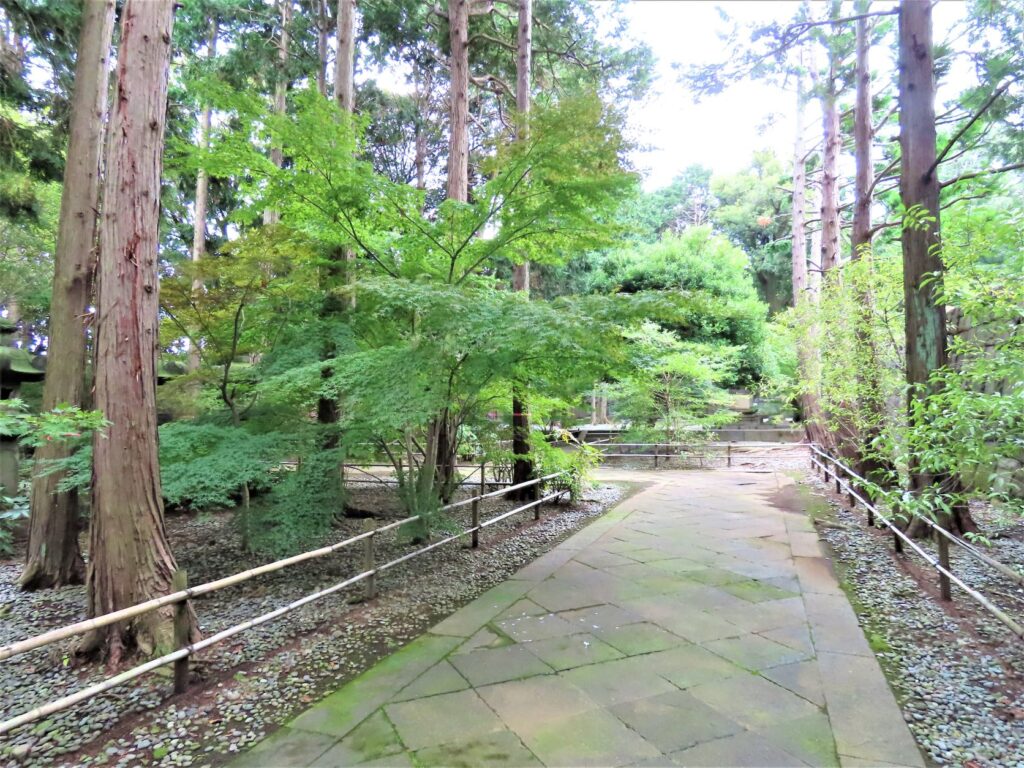
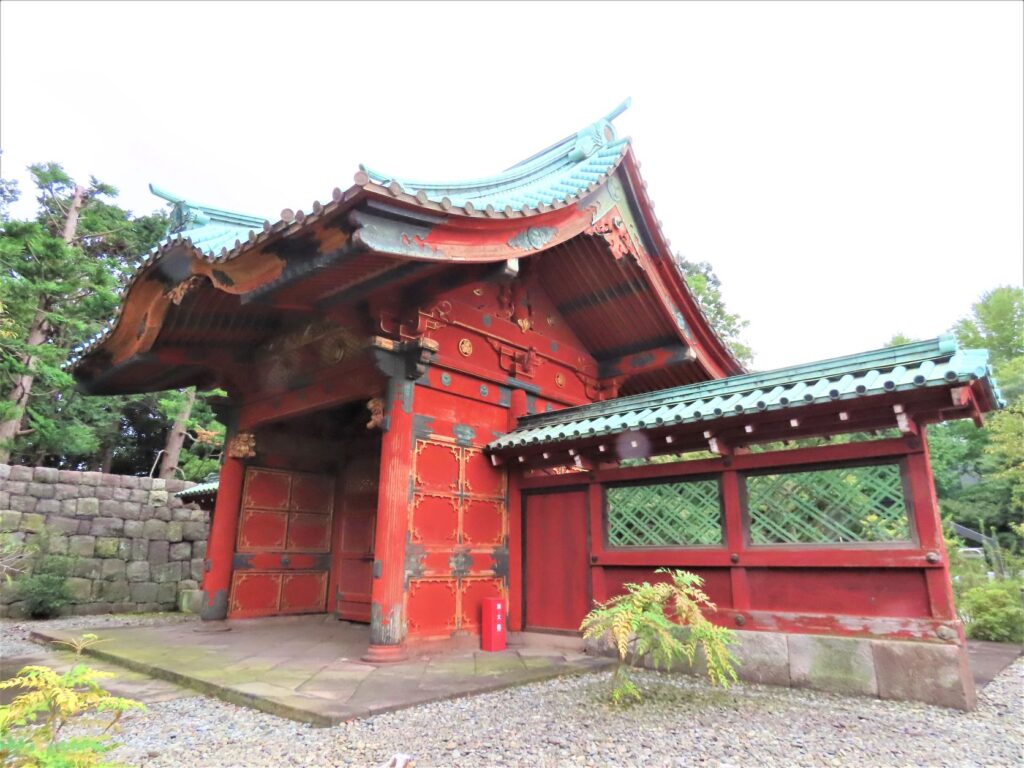
The last place we were guided to was the Goreibyo, a mausoleum that enshrines successive Tokugawa shoguns.
A mausoleum is a mausoleum architecture called ‘aino-ma-zukuri’, which connects the main hall where the principal image, mortuary tablets, and wooden statues are enshrined, and the worship hall where it is worshiped. Suibansha).
The structure of the mausoleum was built under the guidance of Tenkai Daisojo based on the philosophy of the Lotus Sutra, the fundamental scripture of the Tendai sect, but most of the structure was destroyed in the air raids of World War II. Fortunately, the Chokugakumon and Suibansha escaped damage and were designated as Important Cultural Properties, preserving the architectural style of the past.
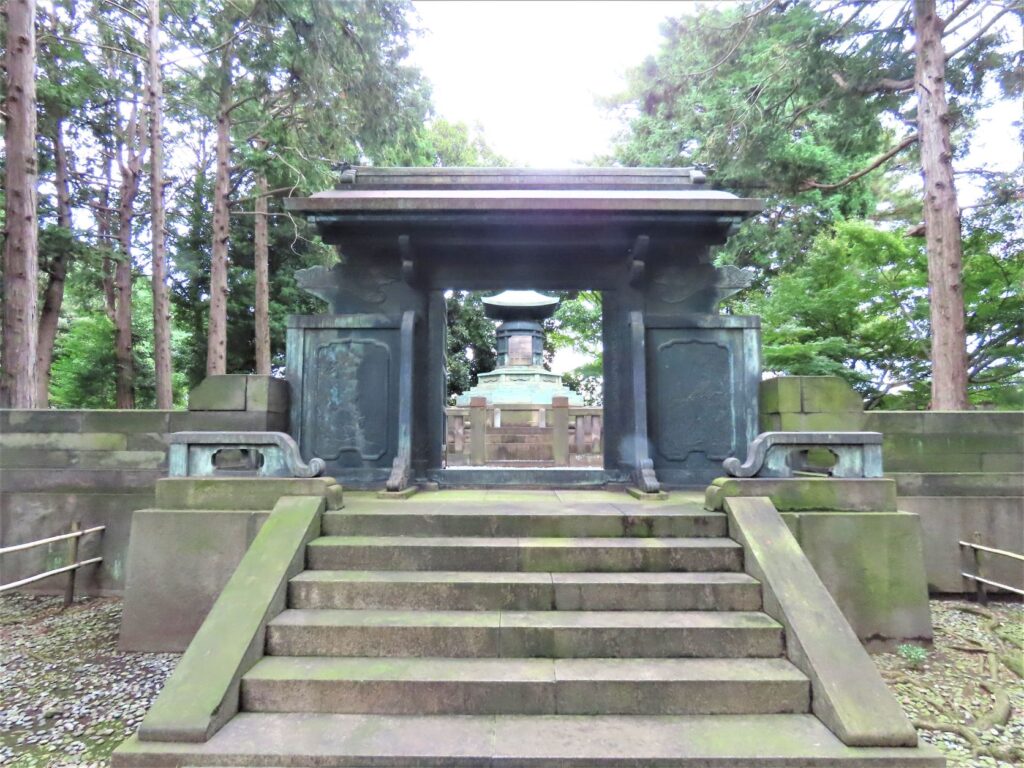
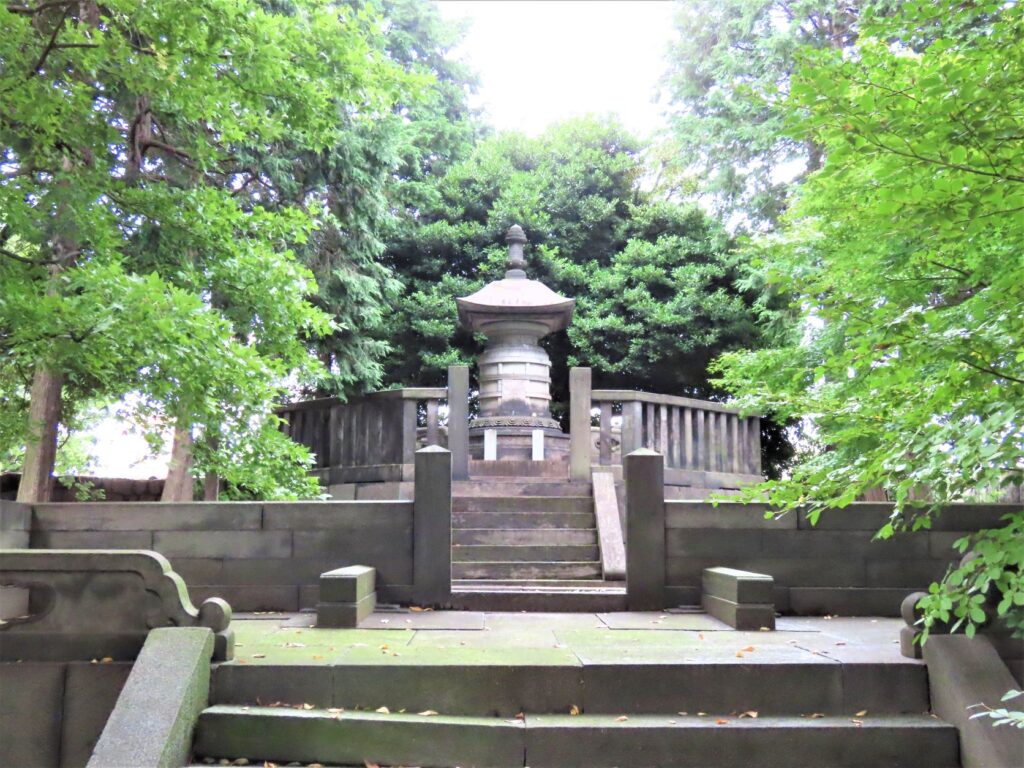
The third shogun, Iemitsu, who was deeply devoted to Tenkai Daisojo, left a will to build a mausoleum beside Nikko Toshogu Shrine after holding a funeral at Kaneiji Temple. After the fourth Ietsuna was buried at Kan’ei-ji Temple, the mausoleums of the fifth Ietsuna, the eighth Ieharu, the tenth Ieharu, the eleventh Ienari, and the thirteenth Iesada were built one after another on the Kan’ei-ji premises.
Kan’ei-ji Temple was originally a prayer temple for the Tokugawa shogunate, but later became a Tokugawa family temple along with Zojo-ji Temple.
The bronze pagoda of the 5th shogun Tsunayoshi and the elegant carvings of phoenixes and giraffes on the left and right doors are eye-catching, but the 8th shogun Yoshimune’s pagoda contrasts with Tsunayoshi’s, giving it a very simple impression.
In 1720 (Kyoho 5), he issued a ban on the construction of goryoya, which was typical of Yoshimune, who issued a “thrift order” to rebuild the finances of the shogunate. After that, no large-scale mausoleums were built, and it is said that a policy was established to enshrine him in a mausoleum at either Kan’ei-ji Temple or Zojo-ji Temple.
Mr. Ishikawa said , “I’m not a tyrannical general, but a thrifty general .”
In addition, the mausoleum of Atsuhime Tenshoin, the wife of the 13th Iesada, is next to it. I wonder if a woman who has been watching the future of the Tokugawa family is still watching over the new era from here.
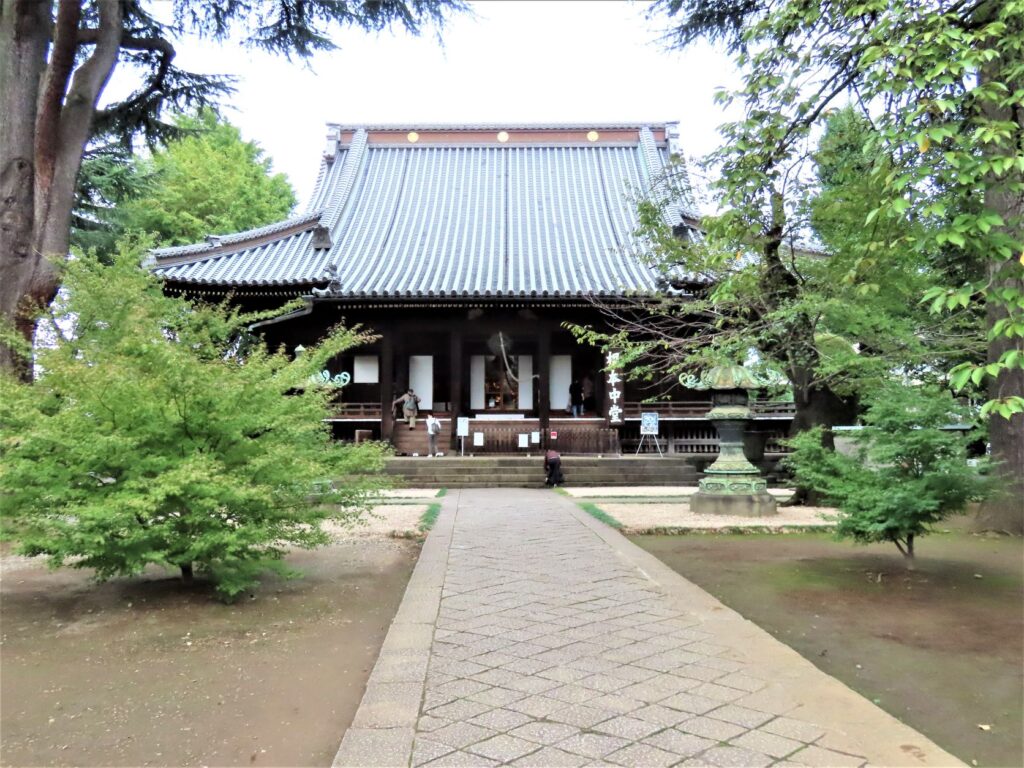
Kan’eiji’s path was not smooth, including repeated war damage and the confiscation of the entire precincts by the new Meiji government.
However, Kan’ei-ji Temple has maintained its trajectory by continuing to be an open temple while adapting to the changing times, such as taking over the forest of the burned-down Tokugawa family mausoleum from the head family and turning it into a cemetery and accepting general parishioners. .
Although the times have changed, the philosophy of Tenkai, that “all things are equal” and “there is no distinction before the Buddha,” seems to be alive today thanks to the efforts of people.
The mausoleum and Aoi no Ma introduced this time are usually not open to the public, but the schedule for special openings is announced on the official website of Kan’eiji Temple (currently suspended).
By all means, while strolling around Ueno, feel the thoughts of the people of the past.
Toeizan Kan’eiji Temple
Address: 1-14-11 Uenosakuragi, Taito-ku, Tokyo
Visiting hours: 9:00 am to 5:00 pm
Mausoleum of successive Tokugawa shoguns, Aoi no Ma: Normally not open to the public. Check the official website for information on special visits.
Access: 15-minute walk from JR Ueno Station (Park Exit), 7-minute walk from Uguisudani Station


